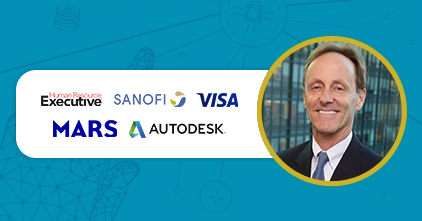As business language becomes more critical to companies worldwide, it’s best to track your progress and milestones using a reliable language proficiency test. Know the skills you can achieve per language level. Read this article:
More companies nowadays consider language training as a necessary part of business strategy. So aside from gaining the right metrics and KPIs for your language training, it’s also great to let your learners know how they can assess their learning progress based on a standard metric. One reputable language proficiency certification, especially in Europe and other parts of the world, is the CEFR.
Basically, CEFR (Common European Framework of Reference for Languages) is debatably the most commonly known language proficiency test and accreditation for most languages in Europe. With this, you and your learners can easily assess whether or not they’re improving their business language skills through language proficiency levels.
So here, you can find 6 different levels and the corresponding practices and milestones your learners are supposed to accomplish in the four main language language skills — reading, writing, speaking, and listening.

A1 – Breakthrough or Beginner
This is the starting language level according to the CEFR scale. In this level, a learner should be able to:
- Understand and use familiar words and very basic phrases about the self, family, and immediate surroundings when native speakers talk slowly and clearly
- Have an understanding of basic names, words, and sentences on materials such as notices, posters, and catalogues
- Interact in a simple way provided that the other speaker is prepared to repeat or rephrase things at a slower pace by asking simple questions on very familiar topics while also knowing how to use simple sentences to describe where they live and people they know
In this level, an employee doesn’t have enough grasp of the language yet, but she/he has a basic understanding of some phrases and words. For example, a salesperson with this language level can only speak and write basic greetings and expressions to her/his colleagues. But understanding and writing business documents and agreements will be a great challenge.
A2 – Waystage or Elementary
While the learner in this stage is still considered a basic user of the target language, language skills in this level are more improved. Here’s some of the skills a learner can have at this stage:
- Can understand sentences and commonly used expressions related to areas of most immediate relevance (e.g. basic personal and family information, local geography and directions, shopping, employment)
- Able to read short, simple texts, find specific, predictable information in everyday materials (e.g. advertisements, menus, timetables, personal letters)
- Can communicate in simple and routine tasks involving simple and direct exchanges of familiar and routinary information
For instance, an office clerk with this language level can only communicate a few familiar jargon using the target language with peers and clients, but crafting complete complex sentences won’t be an easy task for her/him. So it’s better to attain a more advanced language level for you to be able to converse and use a language in a higher business context and level.

B1 – Threshold or Intermediate
Moving on, this is the first level wherein a learner is considered as an independent user of the language. It’s important to always achieve more language confidence as you progress through the levels.
When you’re already at this level, you should be able to:
- Understand the main points of clear standard speech at/about work, school, leisure, radio or TV programmes (on current affairs and topics of personal and professional interest)
- Deal with most situations likely to happen while travelling in an area where the target language is spoken
- Produce simple connected text on topics that are familiar or of personal interest
- Describe experiences and events, dreams, hopes, and ambitions and briefly give reasons and explanations for opinions and plans
In a business and professional set-up, it’s very essential to aim for at least this level in order to be able to express yourself more clearly and explain more things of higher complexity.
For example, business professionals in this level can already clearly state their insights on reports, projects, and strategies and explain simple turns of events in a meeting using the target language.
B2 – Vantage or Upper Intermediate
A professional with this language level can:
- Understand extended speech and lectures and even follow complex lines of argument on familiar topics and understand most TV news, current affairs programmes, and majority of films in standard dialect
- Interact with a degree of fluency and spontaneity that makes regular interaction with native speakers quite possible while having the ability to take an active part in discussion in familiar situations
- Produce clear, detailed text on a variety of topics and explain a viewpoint on an issue while giving its advantages and disadvantages
This is the middle ground. Business professionals in this level can already write long-form texts and explain more complicated topics. At this point, your salespeople in this language level can already discuss with native speakers of the target language wherein they can negotiate and collaborate, but still, given that the topics are familiar.

C1 – Effective Operational Efficiency or Advanced
This is the first level wherein a language user is considered a proficient language user. He/she can already:
- Express oneself fluently and spontaneously without much obvious searching for expressions
- Use language flexibly and effectively for social, academic, and professional purposes
- Understand a wide range of demanding, longer clauses, and recognize implicit meaning
- Produce clear, well-structured, detailed text on complex subjects using organizational patterns, connectors, and cohesive devices
For example, a manager is already comfortable with speaking the language in different contexts as she/he negotiates with executives who are native speakers of the language. While in written form, she/he can already write complex reports and concepts about the industry and business.
C2 – Mastery or Proficiency
This is the highest language proficiency level according to the CEFR scale. A person in this level is already fluent and can already speak with native speakers of the target language naturally and with ease. He/she can already:
- Understand everything heard or read with ease
- Summarize information from different spoken and written sources, reconstructing arguments and accounts in a coherent presentation
- Express oneself spontaneously very fluently with the ability to differentiate finer shades of meaning in even the most complex scenarios
The Takeaway
Since the CEFR is one of the most well-known language proficiency standards in the world, it’s best if you have a language learning provider that can easily determine your language level and provide you with enough assessment tools to know whether or not you’re improving and excelling.
goFLUENT offers language levelling and assessments for global organizations and business professionals worldwide in line with globally recognized language standards such as CEFR and TOEFL.



